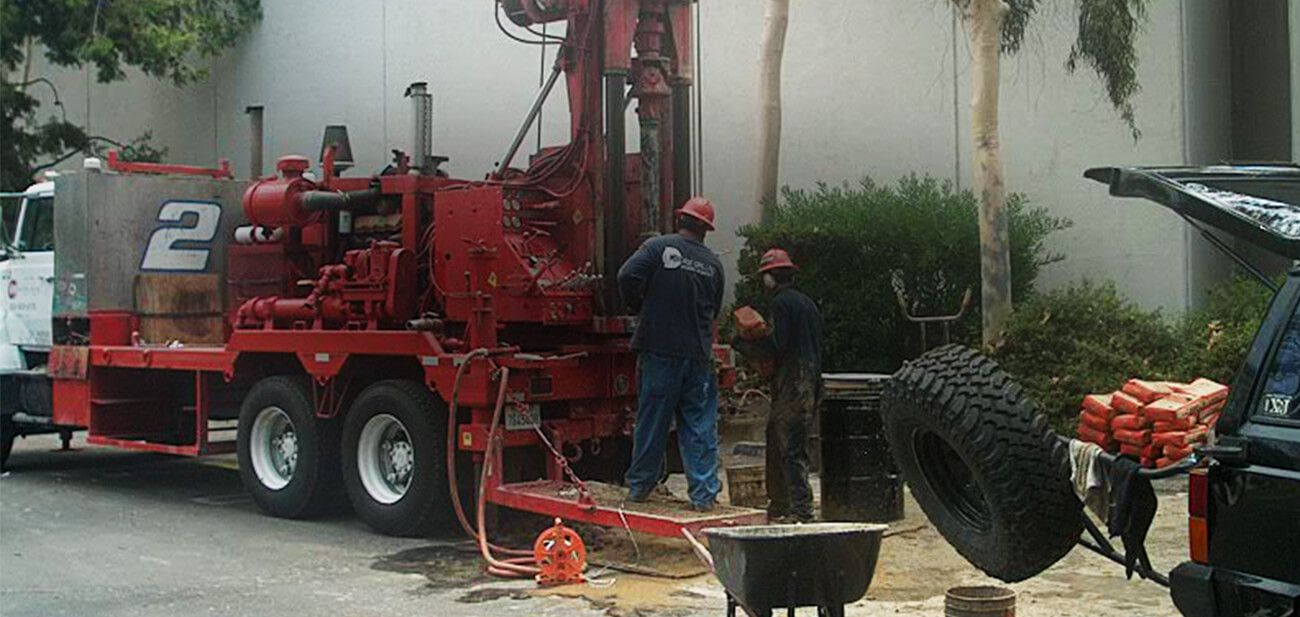The Future of Geotechnical Engineering: How Geotheta is Forming Sector Requirements
The Future of Geotechnical Engineering: How Geotheta is Forming Sector Requirements
Blog Article
Unveiling the Vital Geotechnical Providers: How Geophysical Study, Slope Stability Evaluation, and Groundwater Keeping Track Of Enhance Framework Advancement
In the world of infrastructure growth, the significance of geotechnical solutions can not be overemphasized. Geophysical survey, incline security analysis, and groundwater tracking stand as columns that bolster the foundation of large projects. These services give important understandings right into the subsurface conditions, prospective threats, and overall feasibility of building undertakings. By harnessing the power of sophisticated modern technologies and specialist analysis, framework programmers can browse complex challenges with foresight and accuracy (geotheta). As we unravel the elaborate internet of geotechnical solutions, a much deeper understanding arises of how these fundamental elements balance to not just alleviate threats yet also optimize the efficiency and durability of facilities jobs.
Importance of Geophysical Study
Performing a geophysical study is necessary in facilities advancement as it offers essential insights right into the subsurface problems and prospective geological dangers. By utilizing numerous geophysical approaches such as ground-penetrating radar, seismic studies, and electromagnetic induction, rock hounds and engineers can draw up the below ground structures and identify possible dangers before construction starts. This positive method aids in staying clear of expensive surprises throughout the building phase, inevitably saving money and time.
Geophysical studies are particularly beneficial in examining the stability of the ground, situating underground energies, and determining potential ecological issues. Recognizing the soil make-up, depth of bedrock, and water table degrees is vital for creating strong structures and drainage systems that can stand up to natural pressures and prevent dirt erosion.
Additionally, geophysical surveys play a substantial role in making sure the safety and durability of infrastructure jobs by giving vital details for site choice, course planning, and danger reduction techniques. Generally, the importance of geophysical surveys in framework growth can not be overemphasized, as they create the foundation for lasting and successful building jobs.
Enhancing Incline Security Analysis
Enhancing slope stability analysis is a crucial aspect of geotechnical engineering in ensuring the safety and strength of framework jobs. One secret technique for enhancing incline security evaluation is the usage of numerical modeling software, which permits designers to mimic various incline problems and prospective failure devices.
In addition, performing in-depth field examinations, consisting of geological surveys and geophysical screening, can improve the precision of incline stability analysis. By accumulating data on the subsurface conditions and architectural integrity of inclines, engineers can better anticipate potential failing dangers and implement ideal mitigation measures. Constant monitoring of incline behavior via instrumentation such as piezometers and inclinometers is also essential for examining stability gradually and responding without delay to any indicators of instability. In general, boosting slope security analysis is vital for ensuring click reference the long-lasting safety and sustainability of facilities tasks.
Role of Groundwater Tracking
Reliable groundwater monitoring plays an important duty in ensuring the stability and security of framework projects. Groundwater levels can considerably affect the architectural honesty of foundations, tunnels, and other underground structures. By constantly keeping track of groundwater levels and quality, engineers can determine prospective dangers such as dirt disintegration, structure instability, and waterlogging.
Groundwater tracking aids in analyzing the influence of building and construction tasks on neighborhood aquifers and water sources. It allows for the very early discovery of any kind of groundwater contamination, guaranteeing and avoiding environmental hazards compliance with laws. Moreover, by recognizing the groundwater characteristics, engineers can execute suitable dewatering steps to control water inflow throughout excavation and building and construction procedures, minimizing the risk of flooding and structural failing.
Integrating Geotechnical Solutions
Groundwater tracking, a crucial aspect of framework advancement, lays the groundwork for incorporating geotechnical services seamlessly right into construction tasks. By comprehending the behavior of groundwater within the task website, designers can make informed choices concerning structure style, incline stability, and total job feasibility. Incorporating geotechnical services includes combining different techniques such as geophysical studies, slope stability evaluation, and groundwater tracking to give a detailed understanding of the website conditions. This assimilation enhances the total project preparation, layout, and building stages, resulting in extra cost-efficient and efficient facilities growth.
In addition, the assimilation of geotechnical solutions enables the recognition of prospective dangers and challenges early in the project lifecycle, enabling aggressive actions to be applied to minimize these concerns. With a multidisciplinary technique that integrates geophysical, geological, and hydrological data, designers can maximize building processes, minimize ecological influence, and make sure the long-term stability and efficiency of the facilities. In general, integrating geotechnical solutions is necessary for sustainable and successful infrastructure growth.

Advantages for Facilities Growth
In the world of infrastructure advancement, the application of integrated geotechnical services brings forth a plethora of advantages that substantially boost project results. Incline security analysis plays a vital duty in guaranteeing the security and long life of infrastructure by evaluating the security of inclines and advising necessary reinforcement procedures. On the whole, the incorporation of geotechnical services in check over here facilities advancement not just boosts task efficiency but likewise contributes to the durability and strength of created centers.
Verdict

Enhancing slope security analysis is an essential element of geotechnical design in guaranteeing the safety and security and durability of framework projects. Generally, enhancing slope security analysis is vital for ensuring the long-lasting safety and security and sustainability of infrastructure jobs.
Incline stability analysis plays a critical role in making sure the safety and long life of facilities by assessing the stability of slopes and advising necessary reinforcement procedures. geotheta.In verdict, geophysical survey, slope stability evaluation, and groundwater surveillance are crucial geotechnical services that play a crucial function in boosting framework development. The benefits of integrating these services right into framework growth are clear, and their importance can not be overstated in guaranteeing the long-lasting success and toughness of framework tasks
Report this page